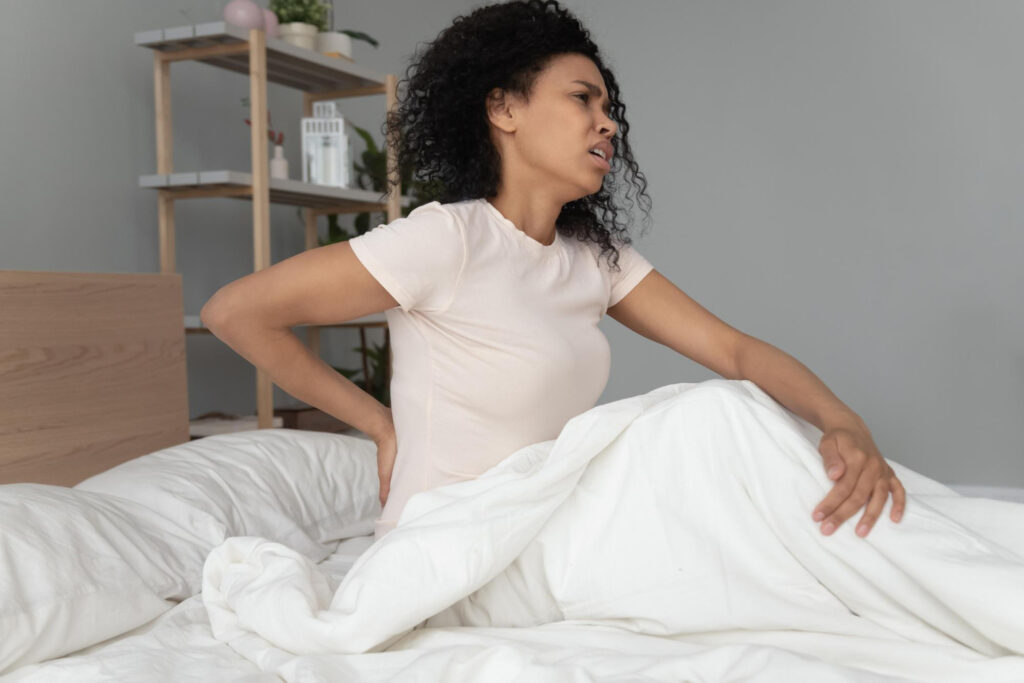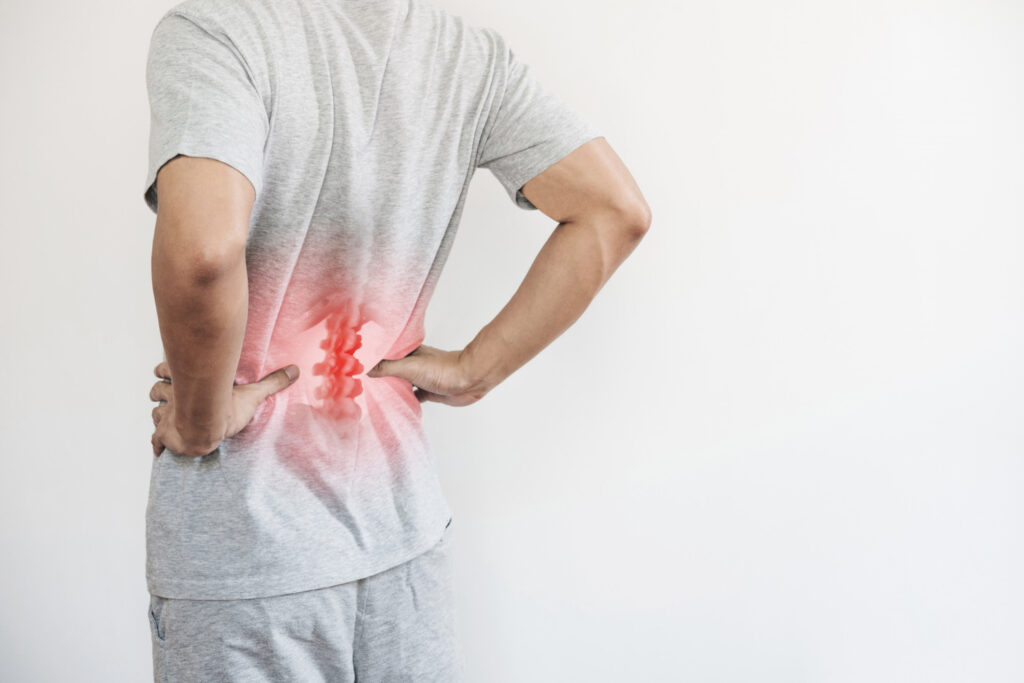Lower back pain is a common ailment that affects many people, often impairing their quality of life. While there are various causes and treatments for lower back pain, one aspect that is frequently overlooked is the impact of sleeping positions.
The way you sleep can significantly affect your spinal health and can either alleviate or exacerbate lower back pain. In this article, we will explore the various sleeping positions and how they can impact those suffering from lower back pain.
How Back Pain Happens While Sleeping
Back pain during sleep can occur for several reasons. One of the primary factors is poor spinal alignment. When your spine is not properly aligned during sleep, it can put undue pressure on the lower back, leading to pain and discomfort. This misalignment can be caused by an unsupportive mattress, incorrect sleeping posture, or existing spinal conditions.
Additionally, sleeping in the same position for an extended period can strain the back muscles and ligaments. This strain is often due to the lack of movement, which can cause stiffness and pain in the lower back area. Understanding the relationship between sleeping positions and back pain is crucial in managing and alleviating this discomfort.
The Best Positions for Lower Back Pain
Choosing the right sleeping position can make a significant difference in managing lower back pain. Here are several positions that are often recommended:
1. Sleeping on Your Back with Knee Support: Lying on your back evenly distributes weight across the widest area of your body, minimizing pressure points and ensuring proper alignment of your spine and internal organs. Placing a pillow under your knees can provide additional support and help maintain the natural curve of your lower back.
2. Fetal Position: Sleeping in a curled-up fetal position can alleviate back pain for some people. This position opens up the space between the vertebrae and can be particularly beneficial for those with a herniated disc. To adopt this position, lie on your side and tuck your knees toward your chest.
3. Side Sleeping with a Pillow Between the Knees: If you prefer sleeping on your side, placing a pillow between your knees can help keep your hips, pelvis, and spine in better alignment. Ensure that your mattress provides adequate support to maintain the natural curve of your spine.
4. Reclined Position: For some individuals, especially those with isthmic spondylolisthesis, sleeping in a slightly reclined position may be beneficial. This can be achieved with an adjustable bed or a wedge pillow that elevates the upper body.
It’s important to note that while these positions can be beneficial for many people with lower back pain, individual preferences, and specific medical conditions play a significant role in determining the most suitable sleeping posture.
Experimenting with different positions and observing the impact on your back pain can help you identify the best option for your specific situation.
Additionally, investing in a supportive mattress and pillows can enhance the effectiveness of these sleeping positions in reducing lower back pain.
The Worst Positions for Lower Back Pain
Just as some sleeping positions can help alleviate lower back pain, others can worsen it. Understanding which positions to avoid is crucial for those suffering from this condition. Here are some positions that are generally not recommended:
1. Stomach Sleeping: Lying on your stomach is often considered one of the worst positions for lower back pain. It can put excessive strain on your back and neck. When you sleep on your stomach, your spine is not in a neutral position, which can lead to both back and neck pain. Additionally, turning your head to the side can strain the neck muscles.
2. Flat on Your Back Without Support: While sleeping on your back can be beneficial, doing so without any support under your knees can sometimes lead to lower back pain. This position can cause the lower back to arch too much, putting pressure on the lumbar spine.
3. Side Sleeping with Legs Straight: Sleeping on your side without bending your knees can also lead to spinal misalignment. This position can create a pull on the lower back, especially if the mattress does not support the natural curve of the spine.
Can the Mattress Cause Lower Back Pain?
Yes, the mattress you sleep on can significantly contribute to lower back pain. A mattress that is too soft may not provide enough support, allowing your body to sink and leading to spinal misalignment.
Conversely, a mattress that is too firm can create pressure points and fail to support the natural curve of the spine. An ideal mattress should provide a balance of comfort and support, adapting to the contours of your body while keeping your spine in a neutral alignment.
Tips for Better Sleep With Lower Back Pain
To improve sleep quality and reduce lower back pain, consider the following tips:
1. Choose the Right Mattress and Pillow: Select a mattress and pillow that offer the right balance of support and comfort for your body.
2. Use Additional Pillows for Support: Depending on your preferred sleeping position, use pillows to provide extra support. For example, a pillow under your knees if you sleep on your back or between your knees if you sleep on your side.
3. Maintain a Regular Sleep Schedule: Going to bed and waking up at the same time every day can help regulate your body’s sleep cycle.
4. Create a Comfortable Sleep Environment: Ensure your sleeping environment is conducive to rest, with a comfortable temperature, minimal light, and reduced noise levels.
5. Practice Relaxation Techniques: Techniques such as deep breathing or meditation can help relax your muscles and prepare your body for sleep.
When Should You See A Professional
If your lower back pain persists despite trying different sleeping positions and tips, it’s important to consult a healthcare professional. This is particularly crucial if your back pain is severe, worsening, or accompanied by other symptoms such as numbness, tingling, or weakness in your limbs.
A healthcare provider can diagnose the underlying cause of your pain and recommend appropriate treatment, which may include physical therapy, chiropractic care, or medical interventions. Remember, timely and professional advice is key to effectively managing and treating lower back pain.




